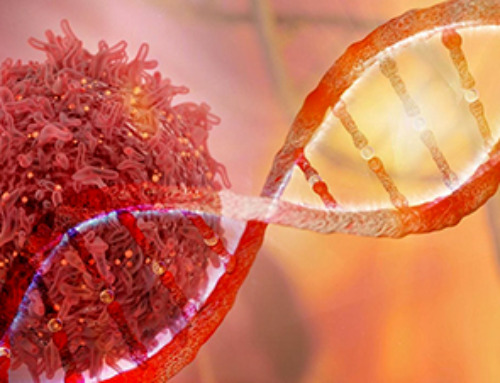Just as a tight core is a component of good physical fitness for humans, helping to stabilize our bodies, mutations that tightened the core of the SARS-CoV-2 spike protein in new variants may have increased the virus’s fitness.
“We wanted to see how the spike protein morphed structurally as it evolved from the original wild-type strain of the virus, through the alpha, delta and most recently omicron variants,” said Ganesh Anand, associate professor of chemistry and of biochemistry and molecular biology, Penn State.
“We found that the spike protein was initially more flexible at the stem region, which is where the spike protein is bundled together, but over time, mutations caused the protein to become progressively tighter and more rigid, and we think it’s now as rigid as it can get. This is important because it means that vaccines that are developed to target the current variant with these rigid spike proteins are likely to be effective for much longer than previous vaccines against the more flexible wild-type strain.”
To study how the spike protein changed with each of the new variants, the team studied the virus in vitro (in a test tube) using a technique called amide hydrogen/deuterium exchange mass spectrometry.
Anand explained that the SARS-CoV-2 spike protein is composed of three chain molecules called monomers that are bound together to form a trimer. The spike protein is made up of two subunits, an S1 and S2 subunit. The S1 subunit contains a receptor binding domain while the S2 subunit contains the stem region responsible for bundling the trimer.
“It is analogous to a tree, with the stem forming the trunk and the receptor binding domain forming the branches,” said Anand.
The team’s results, which published in the journal eLife, revealed that the spike protein stem first became more rigid with the D614G mutation, which is common to all SARS-CoV-2 variants. The stem became progressively more twisted with the emergence of new mutations in subsequent variants, and the omicron BA.1 variant showed the largest magnitude increase in stabilization relative to preceding variants.
Why would the virus benefit from a tighter core?
“We did not study the virus in patients, so we cannot determine if the changes we observed in the spike protein directly affected the newer variants such as omicron’s ability to transmit more readily; however, we can say that the changes likely made the virus more fit, which could translate to better transmission,” said Anand.
“A tighter core could likely make the virus more stable in nasal droplets and faster at binding to and entering host cells. So, for example, what initially took about 11 days to develop an infection after exposure now takes only about four days.”
Anand noted that one of the reasons the vaccines have not been able to fully neutralize the virus is because they were generated against the spike protein of the original wild-type variant.
“The latest bivalent booster—which targets newer variants—helps, but people who never got this booster aren’t receiving this more targeted protection,” he said. “Future vaccines that focus specifically on omicron are likely to be effective for longer.”
Finally, Anand said that the spike protein has now become so tightly twisted that it is unlikely to structurally change further at the stem region.
“There are limits to how much it can tighten,” he said. “I think that we can have some cautious optimism, in that we’re not going to continuously have variants emerging, at least tightening is not going to be a mechanism.”
News
AI Is Overheating. This New Technology Could Be the Fix
Engineers have developed a passive evaporative cooling membrane that dramatically improves heat removal for electronics and data centers Engineers at the University of California San Diego have created an innovative cooling system designed to greatly enhance [...]
New nanomedicine wipes out leukemia in animal study
In a promising advance for cancer treatment, Northwestern University scientists have re-engineered the molecular structure of a common chemotherapy drug, making it dramatically more soluble and effective and less toxic. In the new study, [...]
Mystery Solved: Scientists Find Cause for Unexplained, Deadly Diseases
A study reveals that a protein called RPA is essential for maintaining chromosome stability by stimulating telomerase. New findings from the University of Wisconsin-Madison suggest that problems with a key protein that helps preserve chromosome stability [...]
Nanotech Blocks Infection and Speed Up Chronic Wound Recovery
A new nanotech-based formulation using quercetin and omega-3 fatty acids shows promise in halting bacterial biofilms and boosting skin cell repair. Scientists have developed a nanotechnology-based treatment to fight bacterial biofilms in wound infections. The [...]
Researchers propose five key questions for effective adoption of AI in clinical practice
While Artificial Intelligence (AI) can be a powerful tool that physicians can use to help diagnose their patients and has great potential to improve accuracy, efficiency and patient safety, it has its drawbacks. It [...]
Advancements and clinical translation of intelligent nanodrugs for breast cancer treatment
A comprehensive review in "Biofunct. Mater." meticulously details the most recent advancements and clinical translation of intelligent nanodrugs for breast cancer treatment. This paper presents an exhaustive overview of subtype-specific nanostrategies, the clinical benefits [...]
It’s Not “All in Your Head”: Scientists Develop Revolutionary Blood Test for Chronic Fatigue Syndrome
A 96% accurate blood test for ME/CFS could transform diagnosis and pave the way for future long COVID detection. Researchers from the University of East Anglia and Oxford Biodynamics have created a highly accurate [...]
How Far Can the Body Go? Scientists Find the Ultimate Limit of Human Endurance
Even the most elite endurance athletes can’t outrun biology. A new study finds that humans hit a metabolic ceiling at about 2.5 times their resting energy burn. When ultra-runners take on races that last [...]
World’s Rivers “Overdosing” on Human Antibiotics, Study Finds
Researchers estimate that approximately 8,500 tons of antibiotics enter river systems each year after passing through the human body and wastewater treatment processes. Rivers spanning millions of kilometers across the globe are contaminated with [...]
Yale Scientists Solve a Century-Old Brain Wave Mystery
Yale scientists traced gamma brain waves to thalamus-cortex interactions. The discovery could reveal how brain rhythms shape perception and disease. For more than a century, scientists have observed rhythmic waves of synchronized neuronal activity [...]
Can introducing peanuts early prevent allergies? Real-world data confirms it helps
New evidence from a large U.S. primary care network shows that early peanut introduction, endorsed in 2015 and 2017 guidelines, was followed by a marked decline in clinician-diagnosed peanut and overall food allergies among [...]
Nanoparticle blueprints reveal path to smarter medicines
Lipid nanoparticles (LNPs) are the delivery vehicles of modern medicine, carrying cancer drugs, gene therapies and vaccines into cells. Until recently, many scientists assumed that all LNPs followed more or less the same blueprint, [...]
How nanomedicine and AI are teaming up to tackle neurodegenerative diseases
When I first realized the scale of the challenge posed by neurodegenerative diseases, such as Alzheimer's, Parkinson's disease and amyotrophic lateral sclerosis (ALS), I felt simultaneously humbled and motivated. These disorders are not caused [...]
Self-Organizing Light Could Transform Computing and Communications
USC engineers have demonstrated a new kind of optical device that lets light organize its own route using the principles of thermodynamics. Instead of relying on switches or digital control, the light finds its own [...]
Groundbreaking New Way of Measuring Blood Pressure Could Save Thousands of Lives
A new method that improves the accuracy of interpreting blood pressure measurements taken at the ankle could be vital for individuals who are unable to have their blood pressure measured on the arm. A newly developed [...]
Scientist tackles key roadblock for AI in drug discovery
The drug development pipeline is a costly and lengthy process. Identifying high-quality "hit" compounds—those with high potency, selectivity, and favorable metabolic properties—at the earliest stages is important for reducing cost and accelerating the path [...]





















